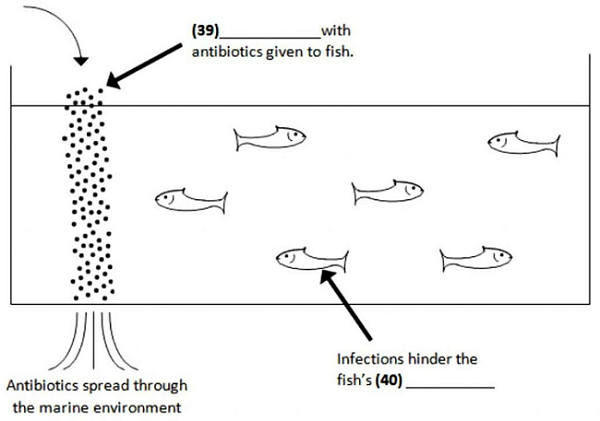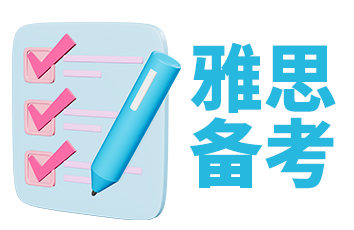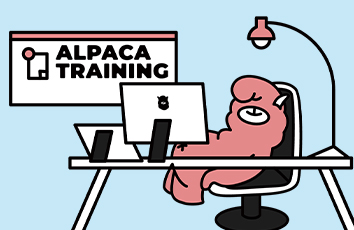2024年9月雅思纸笔考试共有3个考试日期,机考考试共有28个考试日期。以下是羊驼雅思整理了9月雅思考试阅读预测reading passage 3题目及答案,供小伙伴们复习参考。

点击可查看Reading passage1和Reading passage2题目及答案,还有24年9月雅思作文题预测 。
READING PASSAGE 3
You should spend about 20 minutes on Questions 27-40 which are based on Reading Passage 3 below.
Antibiotic Resistance
An antibiotic is a drug that kills or prevents the growth of bacteria. The term 'antibiotic', coined by Selman Waksman, originally described only those antibiotics derived from living bodies, in contrast to 'chemotherapeutic agents', which are purely synthetic. Currently, the term antibiotic is also applied to synthetic antimicrobials.
Overuse or misuse of antibiotics may result in the development of antibiotic resistance in the infecting organisms, similar to the development of pesticide resistance in insects. Doctor Iain Nicholson explains. "The concept of genetic selection requires that as close as possible to 100 per cent of the infecting organisms be killed off to avoid selection of resistance. If a small subset of the population survives the treatment and is allowed to multiply, the average susceptibility of this new population to the compound will be much less than that of the original population, since they have descended from those few organisms that survived the original treatment."
Antibiotic resistance has become a serious problem in both developed and underdeveloped nations. In certain settings, such as hospitals, the rate of antibiotic resistance is so high today that the normal, low-cost antibiotics are virtually useless for the treatment of frequently seen infections. This leads to more common use of newer and more expensive compounds, which in turn leads to the rise of resistance to those drugs. Drug company spokesperson, Emma Thompson, explains the challenge facing the drug industry. "A continuous race to discover new and different antibiotics results in an attempt to keep humanity from losing ground in the battle against infection. The fear is that we will eventually fail to keep up in this race, and that people may again face life-threatening bacterial infections."
An example of antibiotic resistance is Staphylococcus aureus, which used to be treated successfully with penicillin in the 1940's and 1950's. At present, nearly all strains are resistant to penicillin, and many are resistant to other antibiotics, leaving only a narrow selection of drugs useful for treatment. The situation is worsened by the fact that gene coding for antibiotic resistance can be transferred between bacteria, making it possible for bacteria never exposed to an antibiotic to acquire resistance from those which have.
Microbial resistance to antibiotics is a natural consequence of selective pressures placed on bacteria. However, humans have greatly accelerated the evolution of resistant bacteria by the overuse and misuse of antibiotics in the community. Government health official, Georgina Haynes, explains. "One of the major problems is when antibiotics are used to treat disorders for which they have no efficacy, such as the common cold or other viral complaints, and when they are used widely as prophylaxis rather than treatment, because this exposes more bacteria to selection for resistance." Similarly, in order to kill all the bacteria of an infection, antibiotics must be used for a whole course and not stopped just when symptoms improve. The discoverer of penicillin himself, Alexander Fleming, warned the scientific community: "The administration of too small doses leads to the production of resistant strains of bacteria." This can happen due to patient ignorance and to improper pharmacy actions, usually in the developing world. In developing countries, antibiotic prescriptions are often broken up. For example, in some Asian countries, it is common for pharmacies to sell as many tablets as the patient can afford, which may only be two or three. This is an insufficient dose to cure infection and will only further contribute to the evolution of resistant strains of bacteria. Recent reports have also shown that containers of medicine from some African countries sometimes contain only half the drug content that was indicated on the label. This may be due to 'counterfeit' medicines or improper storage, but also tropical conditions, such as those often found in Africa, readily cause degradation of medical compounds. Chenbo Okonkwa, a pharmaceutical wholesaler, describes the problem. "Although local regulations may require pharmacies to store drugs in air-conditioned premises, most undergo frequent power outages and warehouses are rarely kept cool. Furthermore, unauthorised dealers rarely bother to follow official storage guidelines."
Another problem contributing to antibiotic resistance is that antibiotics are widely used in foodproducing animals, which contributes to the emergence of antibiotic-resistant bacteria in them. These resistant bacteria can contaminate the foods that come from these animals, and persons who consume these foods can develop antibiotic-resistant infections. This can be seen, for instance, in the fish farm industry. It is common to put upwards of 100.000 fish into each pen, which creates cramped and stressful conditions. This increases the susceptibility of fish to certain bacterial diseases, such as furunculosis. Furunculosis, an infection of the kidneys, is easily transmitted through water and so is devastating to fish farms. To combat the disease, antibiotics were added to fish food pellets, but these were unpalatable to the fish. They were already suffering from loss of appetite due to their infections and so most of the antibiotics ended up at the bottom of the pens, allowing residual drugs to spread throughout the marine environment. Fish farmer, Jo Hardwick, explains that this is different now. "Today, vaccines are replacing the antibiotic pellets as a treatment for the disease, but unfortunately, most of the damage has already been done."
In conclusion, antibiotics must be used judiciously in humans and animals, because both uses contribute to the emergence, persistence, and spread of resistant bacteria. Resistant bacteria in foodproducing animals are of particular concern. Food animals serve as a reservoir of resistant pathogens and resistance mechanisms that can directly or indirectly result in antibiotic resistant infections in humans. If people do not wish to be faced with an attack of all the diseases they thought they had conquered in the twentieth century, society has to change its approach to antibiotic use.
Questions 27-33
Look at the following statements (questions 27-33) and the list of people below.
Match each statement with the correct person's initials.
Write the correct initials in boxes 27-33 on your answer sheet.
27、Resistant bacteria can develop if doctors do not prescribe enough antibiotic. _______
28、Society may again have to face infectious diseases that were previously thought treatable. _______
29、Using antibiotics as a preventative measure is a key factor in the development of antibiotic resistance. _______
30、Better practice in fish farms when dealing with disease is too late when it comes to the spread of antibiotics in the environments around fish farms. _______
31、Drug companies may not be able to keep finding new antibiotics to fight lethal resistant infections. _______
32、All a patient's infection must be destroyed by prescribed antibiotics in order to stop resistance growing. _______
33、Illicit antibiotic salesmen hardly ever follow the instructions for keeping antibiotics in the right way. _______
IN、Iain Nicholson ET、Emma Thompson GH、Georgina Haynes AF、Alexander Fleming CO、Chenbo Okonkwa JH、Jo Hardwick |
Questions 34-38
Do the following statements agree with the information given in the text?
In boxes 34-38 on your answer sheet write:
TRUE if the statement agrees with the information
FALSE if the statement contradicts the information
NOT GIVEN if there is no information on this
34、The current definition of an antibiotic only includes drugs originating from live organisms.
35、Antibiotic resistance is a significant issue in both first and second world countries.
36、Some hospitals nowadays have to fund new antibiotic research themselves.
37、Climate conditions in some parts of Africa can damage antibiotics in their containers.
38、Resistant bacteria in food cannot be passed on to humans who eat it.
Questions 39 and 40
Label the diagram below.
Write NO MORE THAN THREE WORDS from the text for each answer.
Write your answers in boxes 39 and 40 on your answer sheet.
The Misuse of Antibiotics in the Fish Farm Industry

参考答案
27、AF / 28、ET / 29、GH / 30、JH / 31、ET / 32、IN / 33、CO
34、FALSE / 35、TRUE / 36、NOT GIVEN / 37、TRUE / 38、FALSE
39、(Fish) (food) pellets/ (fish) food
40、appetite




